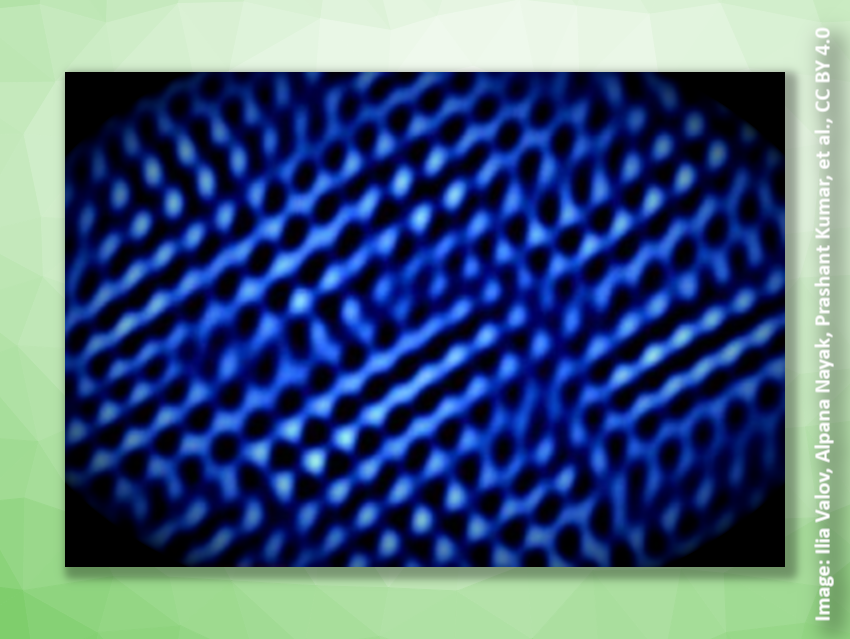Two-dimensional materials such as graphene can have interesting and useful properties that differ from the corresponding bulk materials. Ilia Valov, Forschungszentrum Jülich, Germany, and Institute of Electrochemistry and Energy Systems, Bulgarian Academy of Sciences, Sofia, Alpana Nayak, Indian Institute of Technology Patna, Bihar, India, Prashant Kumar, Indian Institute of Technology Patna and The University of Newcastle, Australia, and colleagues have prepared molybdenene, a two-dimensional material composed of only Mo atoms.
The team used a microwave, in which they heated a 1:1 mixture of MoS2 and graphene powder. In a reaction driven by the microwave’s electric field, millimeter-long “whiskers” are formed, which consist of weakly bonded molybdenene sheets. The team used field emission scanning electron microscopy (FESEM) and found that the whiskers appeared to be a layered material. They were exfoliated using adhesive tape to obtain free-standing molybdenene sheets.
The molybdenene sheets show metallic character, with an electrical conductivity of ca. 940 S m−1. High-resolution transmission electron microscopy (HRTEM) showed that the molybdenene sheets are highly crystalline. The team found a phase featuring criss-cross patterns of atoms with fourfold symmetry and another with a hexagonal arrangement of atoms and a sixfold symmetry that only appeared in limited regions.
The researchers used molybdenene sheets, e.g., to make cantilevers for atomic force microscopy (AFM) by gluing them onto silicon chips. The material was used for both imaging and chemical detection. According to the team, the work could inspire the development of molybdenene-based electronic devices and chemical sensors.
- Microwave synthesis of molybdenene from MoS2,
Tumesh Kumar Sahu, Nishant Kumar, Sumit Chahal, Rajkumar Jana, Sumana Paul, Moumita Mukherjee, Amir H. Tavabi, Ayan Datta, Rafal E. Dunin-Borkowski, Ilia Valov, Alpana Nayak, Prashant Kumar,
Nat. Nanotechnol. 2023.
https://doi.org/10.1038/s41565-023-01484-2




